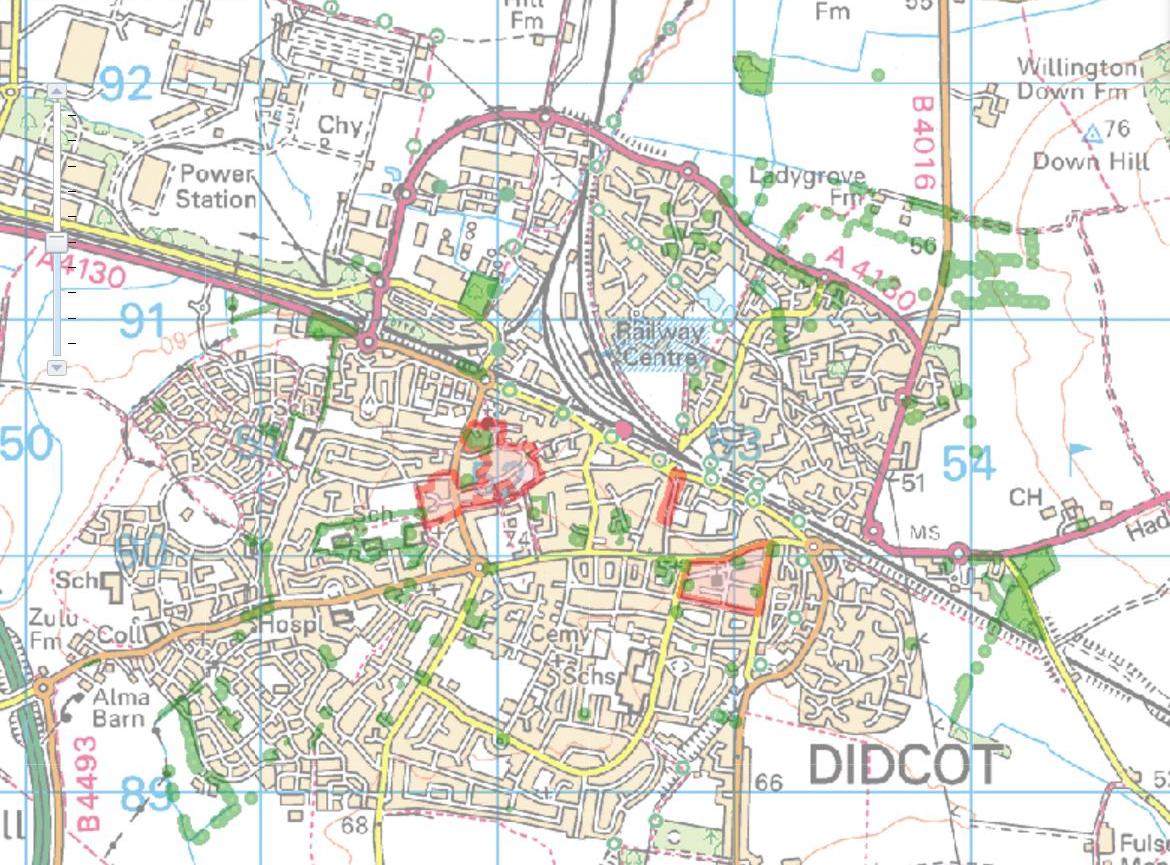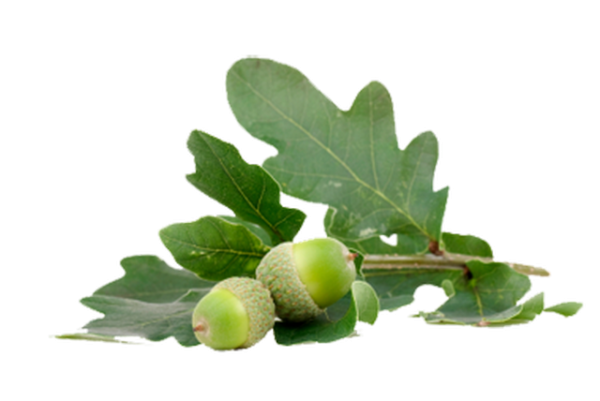A resident's guide
Under the UK planning system, planning authorities such as South Oxfordshire and Vale of White Horse district councils (South and Vale), have a statutory duty to consider the protection and planting of trees when granting planning permission for proposed development.
Local councils define their policies towards future development, and the parameters under which this can be undertaken, in a document called a Local Plan. Across the country, such plans increasingly contain policies relating to the environment, and usually make specific reference to policy towards trees. Councils have to review and update their local plan at least every five years, which gives them the opportunity to reflect updated government guidance, and to prioritise policies that are collectively important to the elected administration and councillors, such as climate change.
Further information: "A brief guide to legislation for trees" by the Arboricultural Association.
All birds, their nests and eggs are protected by the Wildlife and Countryside Act 1981 which makes it an offence, amongst other things, to intentionally take, damage or destroy the nest of any wild bird while it is in use or being built. This means that it may be an offence to cut down a tree during the bird nesting season – officially February to August. Penalties that can be imposed for criminal offences in respect of a single bird, nest or egg contrary to the Wildlife and Countryside Act 1981 are an unlimited fine, up to six months imprisonment or both.
Source: "The Wildlife and Countryside Act 1981" by the RSPB.
The vast majority of protected trees in Didcot (for the parts of the town built so far) are in South Oxfordshire district. The council's Local Plan 2035 came into effect in December 2020, and has a strong policy towards the protection of trees, as the following excerpts show.
Policy ENV1: Landscape and Countryside
2. South Oxfordshire's landscape, countryside and rural areas will be protected against harmful development. Development will only be permitted where it protects and, where possible enhances, features that contribute to the nature and quality of South Oxfordshire's valued landscapes, in particular:
7.10 Trees and hedgerows, individually and collectively, can make an important contribution to biodiversity and the landscape. They also absorb atmospheric pollution and have a beneficial influence on the climate. Development proposals should provide a net increase in tree canopy cover where this is possible, having regard to other considerations including site size, heritage protection, landscape character, habitat protection, residential amenity, and the need to make the best use of land.
The "net increase in tree canopy cover" is intended to make it impractical for a housing developer to propose replacing a mature tree with lots of small trees, as this would result in a net loss of tree canopy. However the commercial desirability of utilising land sometimes doesn't stop developers from submitting plans that don't (at least initially) comply with the above tree policy. The planning application process is designed, amongst other things, to ensure that the council's policies are complied with, before an application can be approved.
In South Oxfordshire there are several other initiatives that support retention of mature trees and the planting of new ones:
In February 2021, South Oxfordshire councillors voted unanimously to appoint a Tree Champion. Given the potential scope of the role, two councillors were appointed, and below are their thoughts on the role and what they hope to achieve.


As District Council Tree Champions, we want to promote the value of trees, woodlands and hedgerows in tackling the climate and ecological emergencies, but the role involves so much more than that.
Ian put a motion to full Council which set out these five initial main points:
The role is so large that quite rightly the council appointed two members to share this vitally important job. We are also used to working together as a team, as Ian is chair of the planning committee at SODC and Peter is vice-chair.
Ian is currently District Councillor for Didcot West and Peter for Kidmore End near Reading, which gives a good balance of town and rural viewpoints, and covers different areas of the district. We may initially divide our role geographically – Ian covering the west of the district and Peter the east.
The Government has already announced plans to plant hundreds of thousands of new trees by 2025, which will greatly increase the amount of tree canopy coverage in this country. As Tree Champions, we will do all we can to get South Oxfordshire its fair share of funding for this bold initiative.
We will be having meetings as soon as possible with forestry officers from SODC and discussions with OCC to begin creating a stronger tree policy and strategy for South Oxfordshire.
There is a fantastic wealth of knowledge in South Oxfordshire and we welcome the views, input and advice of residents.
Now more than ever, people understand the importance of protecting and enhancing the environment. Peter and I are privileged to have this opportunity to work alongside the community in caring for one of our most precious resources, our trees and woodlands.
Ian Snowdon and Peter Dragonetti
South Oxfordshire Tree Champions
"New tree champion appointed to protect green space" – Oxford Mail 25 February 2021
"New Tree Champions embark on ecology and climate work for South Oxfordshire" – South Oxfordshire District Council, 26 February 2021
Tree Preservation Orders (TPOs) are administered by South and Vale and are made to protect trees that bring significant amenity benefit to the local area. This protection is particularly important where trees are under threat. All types of tree, but not hedges, bushes or shrubs, can be protected, and a TPO can protect anything from a single tree to all trees within a defined area or woodland. Any species can be protected, but no species is automatically protected by a Tree Preservation Order.
A TPO is a written order which, in general, makes it a criminal offence to cut down, top, lop, uproot, wilfully damage or wilfully destroy a tree protected by that order, or to cause or permit such actions, without the authority's permission. Anyone found guilty of such an offence is liable for a fine of up to £20,000. In serious cases the case may be dealt with in the Crown Court where an unlimited fine can be imposed.
See also: Government guidance on tree preservation orders and trees in conservation areas.
The two councils have a mostly shared workforce, including a shared Forestry team. South and Vale take a pragmatic view that TPOs are usually only applied where there is risk to a tree. TPOs are generally not applied to trees which are under public ownership or management, such as parks owned and maintained (e.g. by Didcot Town Council), or highway margins (by Oxfordshire County Council). Residents noticing a threat to a tree may apply to the South or Vale to have a TPO applied.
In Didcot there are approximately 400 TPOs on oaks in place.
Normal TPO procedures apply if a tree in a conservation area is already protected by a TPO. But if a tree in a conservation area is not covered by a TPO, you have to give written notice to the council of any proposed work, describing what you want to do, at least six weeks before the work starts. This is called a 'section 211 notice' and it gives the council an opportunity to consider protecting the tree with a TPO.
You don't need to give notice of work on a tree in a conservation area less than 7.5 centimetres in diameter, measured 1.5 metres above the ground (or 10 centimetres if thinning to help the growth of other trees).
This map identifies all trees, groups of trees and woods in South and Vale which are protected by TPOs.

Once launched, zooming in and clicking on a green spot or area will reveal further information about individual trees, groups of trees and woods.
South and Vale provide comprehensive information on their respective websites (which contain almost identical information) about trees including:
If you think illegal works are being undertaken to protected trees, please contact the Forestry team.
Alternatively please email the relevant council. The South email will be copied to both Tree Champions.
South and Vale have a system of email alerts that residents can subscribe to. The system is geographical, so that residents will only receive notifications about activities in their postcode or immediately adjacent postcodes. Residents can choose any or all of the topics – planning applications, planning decisions, changes to waste and recycling services, licensing applications, tree works, and about general news from the council. To register:
Trees face many risks such as storm damage and disease, but they also face threats from human activity. SODC has strong policies towards the protection of trees, but this sometimes doesn't stop developers making proposals that involve loss of particular trees.
Click / tap photos to enlarge / close
There is considerable community enthusiasm for the preservation of trees, including in social media groups such as Facebook Wild in Didcot. It is clear that residents feel that retaining mature trees is increasingly important. The following case studies illustrate instances where mature trees have been threatened, but where intervention from residents with the help of local councillors has prevented the loss of, or damage to the trees.
Click / tap photos to enlarge / close
In 2020, 17,000 people signed a petition to government, part of which read:
An excerpt from the government reply read:
Read full petition statement and full government response
Department of Food and Rural Affairs: Consultation on England Tree Strategy
Newly planted trees often don't survive their first year or two after planting. The Sunday Times reports that up to 30 per cent of new street trees don't make it and, this summer, in Hackney (an area of London otherwise noted for its impressive commitment to tree planting), thousands of saplings died because they were badly planted and little aftercare was provided. It's not just young, newly planted trees - our care for mature trees is wanting too. In Sheffield, protests by residents intent on the protection of thousands of mature trees due to be felled for very tenuous reasons made headlines across the world. Many of those trees were century old limes planted as memorials after the First World War, but for cost conscious contractors, they represented a liability. The expense of maintaining big trees (despite their valuable, and quantifiable contribution to making cities more liveable), was trumped by short term cost reductions achievable by replacing them with three metre saplings. Doncaster is facing similar problems, while big, historic trees have been felled in places like Swansea and Birmingham in recent years. While we happily shell out millions to plant trees, we struggle to find the money for their long term care.
Precis from Green Alliance blog "Inside Track"
